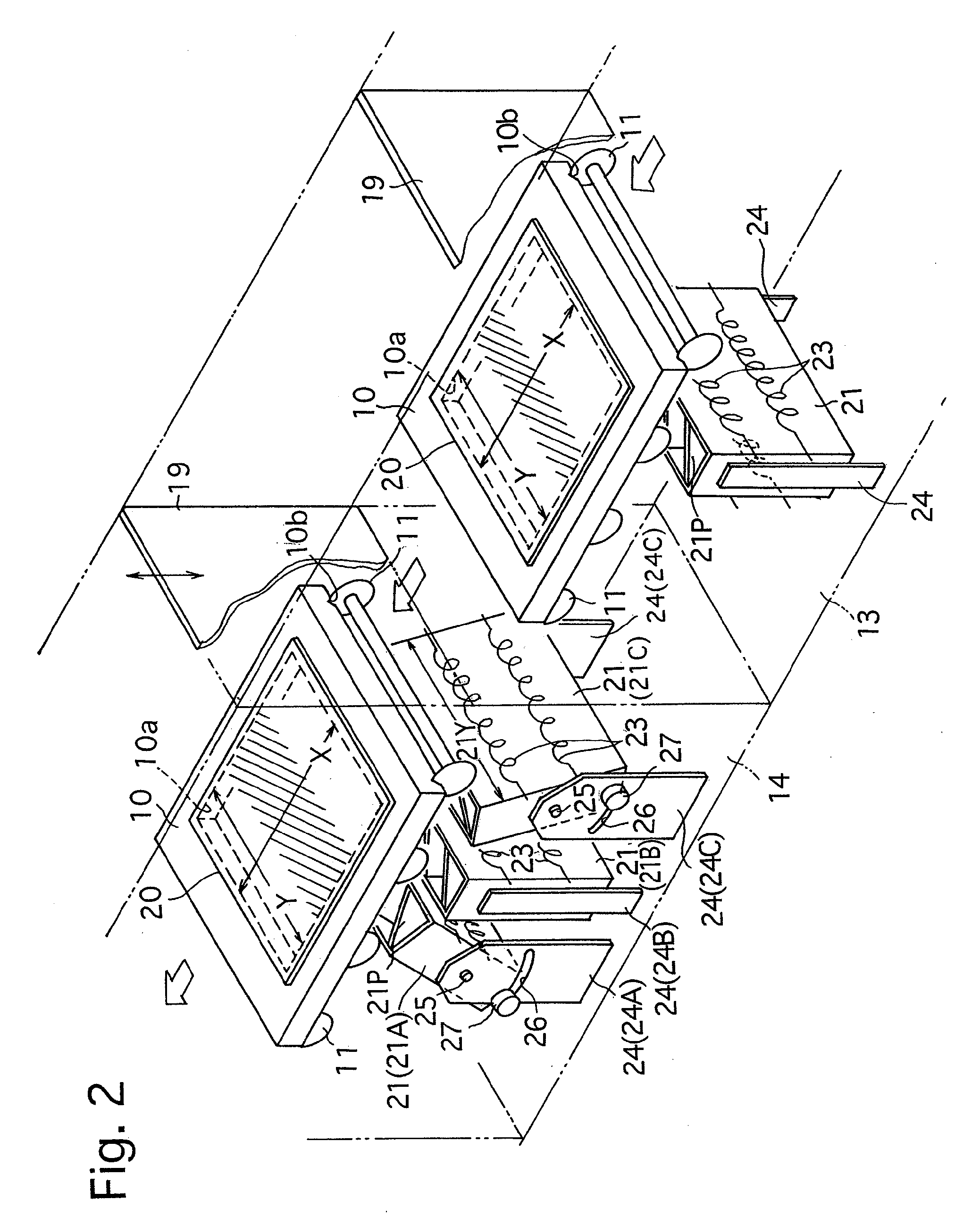Successive vapour deposition system, vapour deposition system, and vapour deposition process
a vapour deposition system and vapour deposition technology, applied in the direction of vacuum evaporation coating, electroluminescent light sources, coatings, etc., can solve the problems of inability to avoid excessive consumption time-consuming and inefficient operation, etc., to achieve the effect of reducing the waste of vapor deposition materials and reducing the waste of tim
- Summary
- Abstract
- Description
- Claims
- Application Information
AI Technical Summary
Benefits of technology
Problems solved by technology
Method used
Image
Examples
Embodiment Construction
[0038]FIG. 1 shows an embodiment of a successive vapor deposition system according to the present invention. The successive vapor deposition system 1 is provided with a plurality of substrate holders 10 and a plurality of conveying rollers 11 which conveys the substrate holders 10 from right to left as viewed in FIG. 1. The plurality of substrate holders 10 and the plurality of conveying rollers 11 constitute a conveyer. The plurality of conveying rollers 11 are driven by a motor (not shown). The successive vapor deposition system 1 is provided, in a conveying direction of the substrate holders 10 (the horizontal-leftward direction as viewed in FIG. 1; hereinafter referred to as “conveying direction”), with a preparation stage 12, a preliminary vacuum chamber 13, a first vapor deposition chamber 14, a second vapor deposition chamber (co-deposition chamber) 15, a third vapor deposition chamber 16, a preliminary ejection chamber 17 and an ejection stage 18, in this order from right to...
PUM
| Property | Measurement | Unit |
|---|---|---|
| area | aaaaa | aaaaa |
| width | aaaaa | aaaaa |
| thickness | aaaaa | aaaaa |
Abstract
Description
Claims
Application Information
 Login to View More
Login to View More - R&D
- Intellectual Property
- Life Sciences
- Materials
- Tech Scout
- Unparalleled Data Quality
- Higher Quality Content
- 60% Fewer Hallucinations
Browse by: Latest US Patents, China's latest patents, Technical Efficacy Thesaurus, Application Domain, Technology Topic, Popular Technical Reports.
© 2025 PatSnap. All rights reserved.Legal|Privacy policy|Modern Slavery Act Transparency Statement|Sitemap|About US| Contact US: help@patsnap.com



